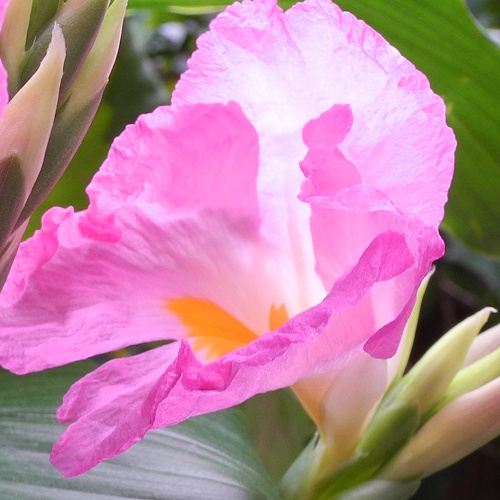Germinating the seeds
When to plant -- Plant your seeds when you receive them for best germination Getting started -- Use a well-draining
soil mix. I use a mix of 1 part
coir fiber I recommend starting the seeds in individual small pots such as seedling starter trays, or small cups about 1.5 inches (4 cm) wide and 2 inches (5 cm) tall, with drainage holes. Fill the pots, without packing down the soil. Place a seed on top and cover with a thin layer of soil - about 1/4 inch / 6 mm. Add water until everything is evenly moist (but not fully saturated). Until the seeds sprout, ensure that the surface soil doesn't dry out. If you enclose the pots in a propagation dome or plastic box, leave it open slightly to allow fresh air to circulate. They sprout well between 70 and 80 degrees F (21-27°C)
during the day,
and above 65°F (18°C) at night.
I have no experience germinating them outside that temperature range. I
recommend placing a
minimum/maximum thermometer The seeds will sprout at different times, usually starting around 3-4 months and continuing for a few months. Continue keeping the soil surface moist for 1 month after they sprout. Lighting -- Give them bright light once they sprout, but protect young seedlings from sun the first 2 months. An LED or fluorescent bulb kept 4 inches (10 cm) away provides the right amount of light (See: "Growing indoors with LED lights"). Older plants grow well in bright shade, dappled sunlight, or morning sun (shade from strong afternoon sun). Fertilizing -- The first 3 months, feed
every 7 days with a small amount of dilute liquid fertilizer (1/8 strength).
Hydroponic fertilizer
is ideal for small seedlings, because it is easily absorbed and contains all
essential nutrients. After 3 months, you may switch to a granular
fertilizer Transplanting -- When your plants are about 2 inches tall (5 cm), gently transfer them to larger pots. Avoid letting the soil ball break apart when repotting, which can damage the roots. Watering -- Try to keep the soil evenly moist, but not fully saturated. Avoid letting it dry out completely. Climate -- During the summer growing season it prefers warmer temperatures, with days above 65 degrees F (21 degrees C) and nights above 50°F (10°C). During dormancy (usually winter) water just enough to keep the soil from drying out completely. Over about 40-50% humidity is best. If the plants seem to suffer from low humidity indoors, consider using an ultrasonic humidifier, sold at home improvement stores and some thrift shops. Pests to watch for -- Watch for any pests that can affect your other plants. Try using insecticidal soap spray before using stronger remedies, since some may harm the plant. If you have any questions, feel free to email me. Have fun growing them! - Jeff Strange Wonderful Things
|
|||||||||


